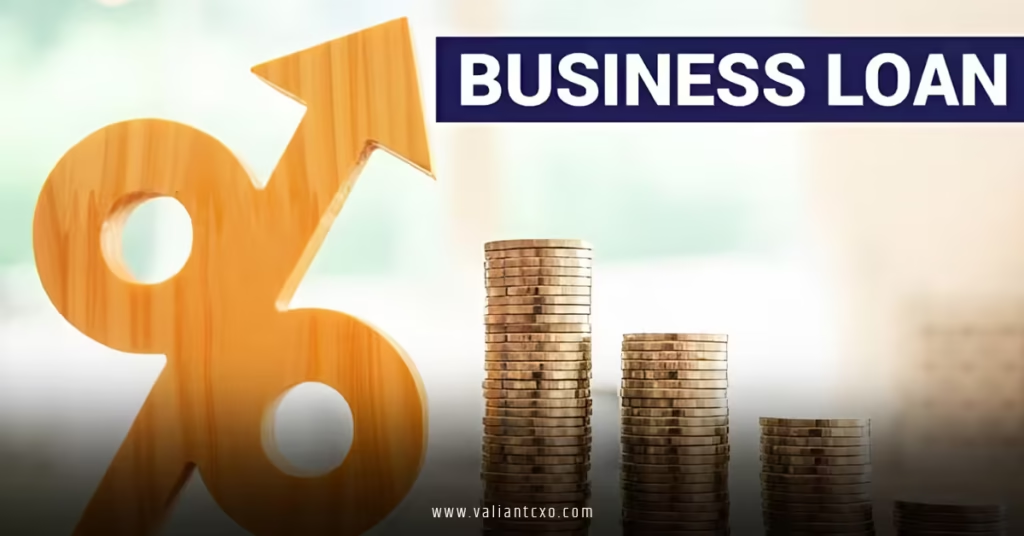Interest rates on business loans can feel like navigating a maze blindfolded. One wrong turn, and you’re stuck with a deal that drains your cash flow. But don’t worry—I’m here to hand you a flashlight and a map. Whether you’re a startup founder chasing your first loan or a seasoned entrepreneur scaling up, understanding interest rates on business loans is the key to making savvy financial decisions. In this guide, we’ll break down everything you need to know about interest rates on business loans, from what they are to how they impact your bottom line. Let’s dive in and demystify this critical topic.
What Are Interest Rates on Business Loans?
So, what exactly are interest rates on business loans? Think of them as the price tag for borrowing money. When you take out a business loan, the lender charges you a percentage of the loan amount as interest. This is their way of making a profit while you get the funds to grow your business. Interest rates on business loans can vary wildly—anywhere from 4% to over 30%—depending on the lender, your creditworthiness, and the type of loan. It’s like shopping for a car: the flashier the model (or riskier the borrower), the higher the price.
There are two main types of interest rates: fixed and variable. Fixed rates stay the same throughout the loan term, giving you predictability. Variable rates, on the other hand, fluctuate with market conditions, which can be a gamble. Imagine locking in a fixed rate like booking a hotel room at a set price, while a variable rate is like riding the stock market—thrilling but risky.
Why Do Interest Rates on Business Loans Matter?
Interest rates on business loans aren’t just numbers on a page; they directly affect how much you’ll pay over time. A lower rate means more money stays in your pocket for inventory, marketing, or hiring. A high rate? That’s like carrying a heavy backpack on a long hike—it slows you down and makes every step harder. For example, a $100,000 loan at 5% interest over five years costs way less than the same loan at 15%. The difference could be thousands of dollars, enough to fund a new product line or cover a slow season.
Factors That Influence Interest Rates on Business Loans
Ever wonder why one business gets a sweet 6% rate while another’s stuck at 20%? It’s not random. Lenders look at several factors when setting interest rates on business loans. Let’s unpack the big ones.
1. Your Credit Score
Your business and personal credit scores are like your financial report card. Lenders use them to gauge how likely you are to repay the loan. A stellar score (think 700+) can unlock lower interest rates on business loans, while a shaky one (below 600) might leave you with sky-high rates or outright rejection. It’s like trying to get into an exclusive club—better credentials get you through the door faster.
2. Business Financials
Lenders love digging into your revenue, profit margins, and cash flow. Strong financials scream, “We’re reliable!” and can snag you lower interest rates on business loans. Weak numbers? You’re seen as a riskier bet, and lenders jack up rates to cover their bases. It’s like convincing a friend to lend you $20—you’re more likely to get it if you’ve got a steady job.
3. Loan Type and Term
The type of loan matters big time. A secured loan, backed by collateral like equipment or property, often comes with lower interest rates on business loans because the lender has a safety net. Unsecured loans, with no collateral, are riskier for lenders, so they charge more. Short-term loans (under a year) often have higher rates than long-term ones (3-5 years) because lenders want quick returns. Think of it like renting an apartment versus buying a house—short-term commitments cost more upfront.
4. Market Conditions
Interest rates on business loans don’t exist in a vacuum. They’re tied to broader economic factors, like the Federal Reserve’s benchmark rates. When the Fed raises rates, borrowing gets pricier across the board. It’s like the tide rising—all boats (or loans) go up. In 2025, with economic shifts and inflation concerns, keeping an eye on market trends is crucial for predicting loan costs.
5. Lender Type
Banks, credit unions, and online lenders each have their own vibe. Traditional banks often offer lower interest rates on business loans but have strict requirements. Online lenders are more flexible but charge higher rates for the convenience. Credit unions? They’re like the friendly neighbor who offers a good deal but only to locals (members). Choosing the right lender is like picking the best coffee shop—each has its perks and quirks.
Types of Business Loans and Their Interest Rates
Not all business loans are created equal, and their interest rates reflect that. Let’s explore the most common types and what you can expect.
1. Term Loans
Term loans are the classic “borrow now, pay later” deal. You get a lump sum and repay it over a set period, typically 1-5 years. Interest rates on business loans like these range from 4% to 13% for banks and up to 30% for online lenders. They’re great for big purchases, like equipment or real estate, but you’ll need solid credit to score the best rates.
2. SBA Loans
Backed by the Small Business Administration, SBA loans are a goldmine for small businesses. Interest rates on business loans through SBA programs, like the 7(a) or 504, typically range from 5% to 11%. The catch? Lengthy applications and strict eligibility. It’s like applying for a scholarship—worth it, but you’ve got to jump through hoops.
3. Business Lines of Credit
A business line of credit is like a credit card for your company—you only pay interest on what you use. Interest rates on business loans of this type usually fall between 7% and 25%, depending on the lender and your credit. They’re perfect for covering cash flow gaps or unexpected expenses, but variable rates can make budgeting tricky.
4. Equipment Financing
Need a new delivery van or a fancy espresso machine? Equipment financing loans are secured by the equipment itself, which keeps interest rates on business loans relatively low—often 6% to 14%. The downside? If you default, the lender can snatch your gear faster than you can say “repossession.”
5. Invoice Financing
If slow-paying clients are killing your cash flow, invoice financing lets you borrow against unpaid invoices. Interest rates on business loans like these can be steep—15% to 30%—but they’re a lifeline for businesses waiting on payments. It’s like getting an advance on your paycheck, but with a bigger price tag.
How to Get the Best Interest Rates on Business Loans
Securing low interest rates on business loans isn’t just luck—it’s strategy. Here’s how to tilt the odds in your favor.
1. Boost Your Credit Score
Pay down debt, make payments on time, and check your credit report for errors. A higher score can shave percentage points off your interest rates on business loans. It’s like training for a marathon—small, consistent efforts lead to big wins.
2. Shop Around
Don’t settle for the first lender you find. Compare offers from banks, credit unions, and online platforms like LendingTree. Each lender has different rates and terms, so shop like you’re hunting for Black Friday deals.
3. Negotiate Like a Pro
Lenders aren’t stone statues—they’ll often budge on interest rates on business loans if you’ve got strong financials or a solid relationship with them. Think of it like haggling at a flea market: a little charm and confidence go a long way.
4. Consider Collateral
Offering collateral, like property or equipment, can lower interest rates on business loans by reducing the lender’s risk. It’s like putting down a deposit on a rental car—it shows you’re serious.
5. Work with a Financial Advisor
A financial advisor can help you navigate loan options and find the best interest rates on business loans. They’re like a GPS for your financial journey, steering you away from dead ends.

The Hidden Costs of Interest Rates on Business Loans
Interest rates on business loans aren’t the only cost to watch. Origination fees, prepayment penalties, and late fees can sneak up like uninvited guests at a party. For example, some lenders charge 1-5% of the loan amount as an origination fee, which gets tacked onto your balance. Always read the fine print to avoid surprises that could derail your budget.
Another factor? The Annual Percentage Rate (APR). Unlike the interest rate, the APR includes fees and other costs, giving you the true cost of borrowing. Comparing APRs across lenders is like checking the total price of a vacation package, not just the flight cost.
Interest Rates on Business Loans in 2025: What to Expect
As of October 2025, interest rates on business loans are influenced by ongoing economic shifts. The Federal Reserve’s recent moves to combat inflation have pushed rates higher, with prime rates hovering around 8-9%. This means interest rates on business loans from traditional lenders might start at 6% for top-tier borrowers but climb to 20% or more for riskier ones. Online lenders, meanwhile, are leaning toward the higher end due to their relaxed requirements.
Wondering how to stay ahead? Keep an eye on economic reports from trusted sources like Forbes. If rates are trending up, locking in a fixed-rate loan now could save you from future hikes. It’s like buying an umbrella before the storm hits.
Common Mistakes to Avoid with Interest Rates on Business Loans
Borrowing money is a big deal, and mistakes can cost you. Here are some pitfalls to dodge:
- Ignoring Your Credit Score: A low score can lock you into high interest rates on business loans. Check it early and take steps to improve it.
- Focusing Only on Rates: A low rate might hide hefty fees. Always look at the APR for the full picture.
- Borrowing More Than You Need: It’s tempting to grab extra cash, but higher loans mean higher interest costs. Borrow only what’s necessary.
- Skipping the Fine Print: Loan terms can hide traps like prepayment penalties. Read everything before signing.
Conclusion
Interest rates on business loans can make or break your financial strategy. By understanding what drives these rates—credit scores, loan types, market conditions, and more—you can take control of your borrowing decisions. Whether you’re eyeing a term loan, an SBA loan, or a line of credit, shopping around and boosting your financial profile are your best bets for landing a great deal. Don’t let high rates hold your business back. Arm yourself with knowledge, compare offers, and negotiate like a pro. Ready to grow your business without breaking the bank? Start exploring your loan options today and take the first step toward smarter borrowing.
FAQs
1. How can I lower interest rates on business loans?
To lower interest rates on business loans, improve your credit score, offer collateral, and compare multiple lenders. Negotiating with lenders and choosing a secured loan can also help you secure a better rate.
2. What’s the difference between fixed and variable interest rates on business loans?
Fixed interest rates on business loans stay constant, offering predictability. Variable rates fluctuate with market conditions, which can save money if rates drop but cost more if they rise.
3. Are SBA loans a good option for low interest rates on business loans?
Yes, SBA loans often have lower interest rates on business loans, typically 5-11%, but they require strong credit and a lengthy application process. They’re ideal for established businesses.
4. How do economic conditions affect interest rates on business loans?
Economic factors like inflation and Federal Reserve policies influence interest rates on business loans. Higher benchmark rates lead to pricier loans, while lower rates can make borrowing cheaper.
5. Can startups get low interest rates on business loans?
Startups can get lower interest rates on business loans by building a strong business plan, securing collateral, or opting for SBA loans. However, limited credit history may lead to higher rates.
Read More:valiantcxo.com


